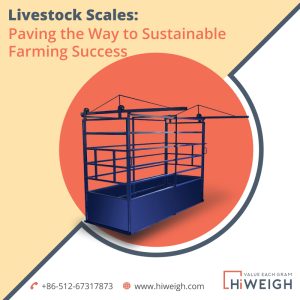


The agricultural landscape has solidified around sustainable farming practices, which place an increasing focus on animal welfare, environmental responsibility, and resource efficiency. Optimising resource utilisation on farms through the use of cutting-edge technologies, like livestock scales, is a vital but frequently disregarded component of sustainable agriculture. We’ll look at how livestock scales are essential tools for modern farming resource optimisation in this blog post.
Precision Weighing for Feed Management
Feed management is one of the main areas where China hog sheep scale can help with resource optimisation. Farmers can precisely measure and distribute feed thanks to precision weighing, which keeps animals from being overfed or underfed. Farmers can customise nutrition plans to meet the unique requirements of individual animals and minimise feed waste by using livestock scales.
Efficient Breeding programmes
Cattle scales are essential for establishing and overseeing productive breeding programmes on farms. Farmers can improve genetic traits linked to growth and productivity by keeping precise records of the weights of breeding animals and their progeny. In addition to raising the general quality of the herd, this focused breeding strategy minimises the need for overbreeding, saving time and money.
Health Monitoring and Disease Prevention
Preventing disease outbreaks and preserving the general health of livestock depend on the early detection of health problems. Using livestock scales, farmers can regularly monitor the weight of their animals and spot any deviations from their typical growth patterns. Unexpected weight loss or stagnation may be a sign of medical problems that should be promptly addressed to minimise the need for antibiotics or other medical procedures.
Environmental Impact and Feed Conversion Ratios
The environmental effects of livestock farming have drawn attention, especially in relation to resource consumption and greenhouse gas emissions. By maximising feed conversion ratios—the amount of feed needed to produce a unit of meat or milk—livestock scales help promote sustainable farming. Farmers can reduce the ecological footprint of livestock operations by optimising feed efficiency through diet adjustments made in response to accurate weight measurements.
Water Management and Grazing Rotation
Livestock scales are useful for more than just weighing dry feed; they also help with water management optimisation. Farmers can use rotational grazing techniques by keeping an eye on the weights of the animals in various grazing areas. By preventing soil degradation and encouraging healthy vegetation regrowth, this makes sure pastures are not overgrazed. Long-term environmental health and sustainable land use are enhanced by effective pasture and water management.
Data-driven Decision Making
Data-driven decision-making is essential for resource optimisation in the era of precision agriculture. Livestock scales offer an abundance of information about individual animals as well as entire herds, enabling farmers to monitor performance metrics, spot trends, and make well-informed decisions. Over time, resource efficiency and continuous improvement are made possible by this proactive approach to farm management.
How Do You Choose the Right Cattle Scale?
Selecting the appropriate livestock scale is an essential choice for any rancher or farmer. The precision and efficacy of livestock weighing can influence multiple facets of farm administration, ranging from feed optimisation to health surveillance. Here are some important things to think about when choosing the best livestock scale for your business:
Volume and Dimensions:
Animal Size: Take into account the range of sizes and weights of your cattle. For different animal sizes, from tiny poultry to huge cattle, different scales are used. Make sure the capacity of the scale corresponds to the mean weight of your animals.
Species: Certain livestock, like pigs, sheep, or cattle, are the exclusive targets of certain scale designs. To guarantee accurate and effective weighing, select a scale appropriate for the species you are working with.
Platform vs. Cage: Determine if your needs are better served by a platform scale or a cage scale. While cage scales are made for livestock that might be more restless when being weighed, platform scales are appropriate for animals that can remain motionless.
Final Thoughts
It is impossible to overstate the importance of the China hog sheep scale in resource optimisation as the agriculture sector adopts sustainable farming methods. The economic and environmental sustainability of livestock operations is greatly enhanced by these tools, which range from data-driven decision-making to precision feed management. Incorporating cutting-edge weighing technologies into farming operations not only improves animal welfare but also sets the stage for a more sustainable agricultural future.
